 W
WThe Crown of Aragon was a composite monarchy, also nowadays referred to as a confederation of individual polities or kingdoms ruled by one king, originated by the dynastic union of the Kingdom of Aragon and the County of Barcelona and ended as a consequence of the Spanish War of Succession. At the height of its power in the 14th and 15th centuries, the Crown of Aragon was a thalassocracy controlling a large portion of present-day eastern Spain, parts of what is now southern France, and a Mediterranean "empire" which included the Balearic Islands, Sicily, Corsica, Sardinia, Malta, Southern Italy and parts of Greece.
 W
WThis is a list of the kings and queens of Aragon. The Kingdom of Aragon was created sometime between 950 and 1035 when the County of Aragon, which had been acquired by the Kingdom of Navarre in the tenth century, was separated from Navarre in accordance with the will of King Sancho III (1004–35). In 1164, the marriage of the Aragonese princess Petronila and the Catalan count Ramon Berenguer IV created a dynastic union from which what modern historians call the Crown of Aragon was born. In the thirteenth century the kingdoms of Valencia, Majorca and Sicily were added to the Crown, and in the fourteenth the Kingdom of Sardinia and Corsica. The Crown of Aragon continued to exist until 1713 when its separate constitutional systems were swept away in the Nueva Planta decrees at the end of the War of the Spanish Succession.
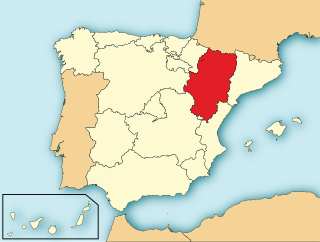 W
WThe Kingdom of Aragon was a medieval and early modern kingdom on the Iberian Peninsula, corresponding to the modern-day autonomous community of Aragon, in Spain. It should not be confused with the larger Crown of Aragon, that also included other territories — the Principality of Catalonia, the Kingdom of Valencia, the Kingdom of Majorca, and other possessions that are now part of France, Italy, and Greece — that were also under the rule of the King of Aragon, but were administered separately from the Kingdom of Aragon.
 W
W W
WThe Battle of Portopí was an open field military conflict between the Almohad troops that occupied the island of Majorca and the Christian army led by King James I the Conqueror with the aim of annexing it to the Crown of Aragon in order to expand their domain. It was carried out at various points in the current Sierra de Na Burguesa, approximately halfway between the current resort town of Santa Ponsa and the City of Majorca. It was the second major battle in the campaign for the conquest of the island of Majorca initiated by the Aragonese king.
 W
WBernat II de Cabrera was an Aragonese nobleman, diplomat, and military commander. Born in Calatayud, he participated in the conquest of Majorca (1343). He commanded the naval squadron that defeated the Genoese navy and took Alghero in 1353.
 W
WCatalan Countries refers to those territories where the Catalan language, or a variant of it, is spoken. They include the Spanish regions of Catalonia, Valencia, the Balearic Islands and parts of Aragon and Murcia, as well as the department of Pyrénées-Orientales in France, the Principality of Andorra, and the city of Alghero in Sardinia (Italy). In the context of Catalan nationalism, the term is sometimes used in a more restricted way to refer to just Catalonia, Valencia and the Balearic Islands. The Catalan Countries do not correspond to any present or past political or administrative unit, though most of the area belonged to the Crown of Aragon in the Middle Ages. Parts of Valencia (Spanish) and Catalonia (Occitan) are not Catalan-speaking.
 W
WCharles III of Spain ruled Spain (1759–1788), after ruling Naples as Charles of Bourbon (1734–1759) and Sicily, where he was known simply as Charles III, (1735–1759). He was the fifth son of Philip V of Spain, and the eldest son of Philip's second wife, Elisabeth Farnese. A proponent of enlightened absolutism and regalism, he succeeded to the Spanish throne on 10 August 1759, upon the death of his half-brother Ferdinand VI, who left no heirs.
 W
WCharles VI was Holy Roman Emperor and ruler of the Austrian Habsburg Monarchy from 1711 until his death, succeeding his elder brother, Joseph I. He unsuccessfully claimed the throne of Spain following the death of his relative, Charles II. In 1708, he married Elisabeth Christine of Brunswick-Wolfenbüttel, by whom he had his four children: Leopold Johann, Maria Theresa, Maria Anna, and Maria Amalia.
 W
WThe Chronicle of Ramon Muntaner, written in Xirivella between 1325 and 1328, is the longest of the four great chronicles and narrates the facts from the birth of James I of Aragon (1207) to the coronation of Alfonso IV of Aragon (1328). His character of "mirror of princes" and "mirror of citizens" has been pointed out by all scholars.
 W
WThe 1412 Compromise of Caspe was an act and resolution of parliamentary representatives of the constituent realms of the Crown of Aragon, meeting in Caspe, to resolve the interregnum following the death of King Martin of Aragon in 1410 without a legitimate heir.
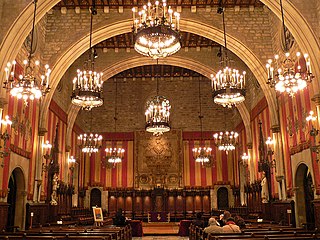 W
WThe Consell de Cent was a governmental institution of Barcelona. It was established in the 13th century and lasted until the 18th century.
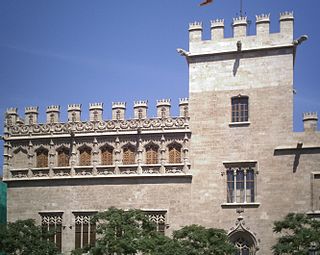 W
WThe Consulate of the Sea was a quasi-judicial body set up in the Crown of Aragon, later to spread throughout the Mediterranean basin, to administer maritime and commercial law. The term may also refer to a celebrated collection of maritime customs and ordinances in Catalan language, also known in English as The Customs of the Sea, compiled over the 14th and 15th centuries and published at Valencia in or before 1494.
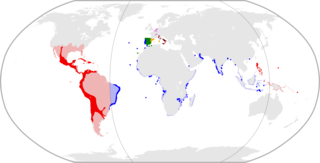 W
WThe Council of Aragon, officially, the Royal and Supreme Council of Aragon, was a ruling body and key part of the domestic government of the Spanish Empire in Europe, second only to the monarch himself. It administered the Crown of Aragon, which was composed of the Kingdom of Aragon, Principality of Catalonia, Kingdom of Valencia, Kingdom of Mallorca, Kingdom of Sardinia, and finally the Aragonese possessions in Southern Italy that were incorporated into the Council of Italy together with the Duchy of Milan in 1556. The Council of Aragon ruled these territories as a part of Spain, and later the Iberian Union.
 W
WThe Count of Barcelona was the ruler of the County of Barcelona and the Principality of Catalonia for much of Catalan history, from the 9th century until the 15th century.
 W
WThe Lordship of Salona, after 1318 the County of Salona, was a Crusader state established after the Fourth Crusade (1204) in Central Greece, around the town of Salona.
 W
WBernard Desclot was a Catalan chronicler whose work covering the brief reign of Peter III of Aragon (1276–85) forms one of the four Catalan Grand Chronicles through which the modern historian views thirteenth- and fourteenth century military and political matters in the Kingdom of Aragon and the Principality of Catalonia, including the "Aragonese Crusade". Desclot's Chronicle begins in the eleventh century but gains especial interest when he comes to describe events current within living memory. Bernard's literary model was Romance, and his account is spiced with dramatic monologues of the central characters and thrilling episodes, such as the escape of Peter's brother, James II of Majorca, from the fortress of Perpignan, through the castle's drains.
 W
WThe Duchy of Athens was one of the Crusader states set up in Greece after the conquest of the Byzantine Empire during the Fourth Crusade as part of the process known as Frankokratia, encompassing the regions of Attica and Boeotia, and surviving until its conquest by the Ottoman Empire in the 15th century.
 W
WFurs of Valencia were the laws of the Kingdom of Valencia during most of the Middle Ages and early modern Europe. The laws were a series of charters which, altogether, worked similarly as a modern Constitution does now. Thus, they defined the position of and checks and balances between the Royal House, the nobility, the Catholic ecclesiastic and the judicial procedures. The first codifications are based in the Usages of Barcelona, Costums of Lleida, and the Furs of Aragon.
 W
WThe General Archive of the Crown of Aragon, originally Royal Archives of Barcelona, is an archive containing the background documents of the institutions of the former Crown of Aragon and currently also contains other historical resources.
 W
WGévaudan is a historical area of France in Lozère département. It took its name from the Gabali, a Gallic tribe subordinate to the Arverni.
 W
WThe House of Entença was an ancient and noble dynasty of the Crown of Aragon.
 W
WIbiza is a city and municipality located on the southeast coast of the island of Ibiza in the Balearic Islands autonomous community.
 W
WThe Infantes of Aragon is an appellation commonly used by Spanish historians to refer to a group of 15th-century infantes (princes) of the House of Trastámara, specifically the sons of King Ferdinand I of Aragon and his wife Eleanor of Alburquerque:Infante Alfonso (1396–1458) - became Alfonso V of Aragon, also king of Sicily and Naples (f.1442) Infanta Maria (1396–1445) - Maria of Aragon, first wife of John II of Castile (m.1420) Infante Juan (1398–1479) - King of Navarre (f.1425), later King John II of Aragon (f.1458). Infante Enrique (1400–1445) - Henry of Aragon, Duke of Villena, Count of Albuquerque, Count of Empúries and Grand Master of the Order of Santiago (f.1409) Infanta Leonor (1402–1445) - Eleanor of Aragon, consort of Edward I of Portugal (m.1428) Infante Pedro (1406–1438) - Peter of Aragon, Count of Alburquerque and Duke of Noto Infante Sancho (1410–1416) - infant master of the Order of Alcántara, died prematurely
 W
WThe Kingdom of Majorca was a realm on the east coast of Spain, including Mediterranean islands, and founded by James I of Aragon, also known as James The Conqueror. After the death of his firstborn son Alfonso, a will was written in 1262 and created the kingdom to cede it to his son James. The disposition was maintained during successive versions of his will and so when James I died in 1276, the Crown of Aragon passed to his eldest son Peter, known as Peter III of Aragon or Peter the Great. The Kingdom of Majorca passed to James, who reigned under the name of James II of Majorca. After 1279, Peter III of Aragon established that the king of Majorca was a vassal to the king of Aragon. The title continued to be employed by the Aragonese and Spanish monarchs until its dissolution by the 1715 Nueva Planta decrees.
 W
WThe Kingdom of Valencia, located in the eastern shore of the Iberian Peninsula, was one of the component realms of the Crown of Aragon. When the Crown of Aragon merged by dynastic union with the Crown of Castile to form the Kingdom of Spain, the Kingdom of Valencia became a component realm of the Spanish monarchy.
 W
WLa Franja is the area of Catalan-speaking territories of eastern Aragon bordering Catalonia, in Spain. It literally means "the strip" and can also more properly be called Franja d'Aragó, Franja de Ponent or Franja Oriental d'Aragó in Catalan.
 W
WThe Liber feudorum maior, originally called the Liber domini regis, is a late twelfth-century illuminated cartulary of the Crown of Aragon. It was compiled by the royal archivist Ramon de Caldes with the help of Guillem de Bassa for Alfonso II, beginning in 1192. It contained 902 documents dating as far back as the tenth century. It is profusely illustrated in a Romanesque style, a rarity for utilitarian documents. The LFM is an indispensable source for the institutional history of the emerging Principality of Catalonia. It is preserved as a file in the Arxiu de la Corona d'Aragó (ACA), Cancelleria reial, Registres no. 1, in Barcelona.
 W
WThis is a list of consorts of the monarchs of the Kingdom of Aragon. Blanche II of Navarre and Philip I of Castile died before their spouses inherited the crown.
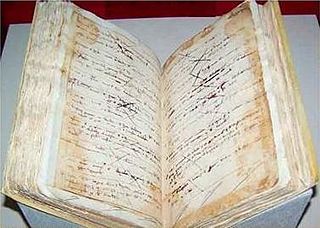 W
WThe Llibre del Repartiment de València is a record book in which the King's scribes recorded promises of donations of properties at the conclusion of the Valencian conquest. The scribes later indicated the names of the persons who actually took possession. This is not the only distribution of lands during the time of the Reconquista; there are a few others, published and unpublished, the major ones are for Majorca, Seville, Murcia, Orihuela, Lorca, and other minor ones for Alora, Benalmádena, Comares, Cártama, Casabonarela, Coin, Mijas, Alhaurin, Almogía, Alozaina, Bezmilian among others.
 W
WThe Llibre dels fets, originally spelled Libre dels feyts, is the autobiographical chronicle of the reign of James I of Aragon (1213–1276). It is written in Old Catalan in the first person and is the first chronologically of the four works classified as The Four Great Catalan Chronicles, all belonging to the early medieval Crown of Aragon, and its first royal dynasty, the House of Barcelona. James I inherited as a child the titles of King of Aragon, Count of Barcelona, and Lord of Montpellier, but also became by conquest King of Majorca and King of Valencia. James emphasises in his chronicles his conquest of Majorca (1229) and of Valencia (1238).
 W
WLord of Balaguer is a title historically held by the person first in line to the Kingdom of Majorca, a part of the Crown of Aragon. The current holder is Leonor, elder daughter and heir presumptive of Felipe VI.
 W
WThe Kingdom of Majorca (1231–1715) was created by James I of Aragon following his conquest in 1229 and the subsequent surrender of sovereignty by the Muslim rulers of the Balearic Islands in 1231. It was ruled in conjunction with the Crown of Aragon until his death when by will it passed to a younger son, James (II), who ruled the kingdom as nominal vassal of the Aragonese Crown. He was removed by his nephew Alfonso III of Aragon, who conquered the island of Menorca in 1287, effectively recovered Menorca from Moorish rule. By the Treaty of Anagni of 1295, however, these island territories were yielded back to James. In 1344, the kingdom was again united with the Crown of Aragon but still disputed by pretenders until 1403. It subsequently formed an administrative kingdom within the Crown of Spain periodically included in the royal style – as in Philip II's in the 1584 Treaty of Joinville – until the Nueva Planta Decrees abolished these divisions in 1715.
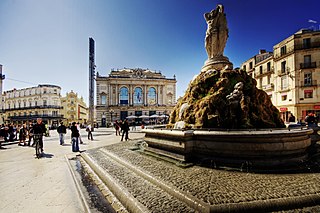 W
WMontpellier is a city near the south coast of France on the Mediterranean Sea. It is the capital of the Hérault department. It is located in the Occitanie region. In 2017, 616,296 people lived in the urban area and 285,121 in the city itself. The inhabitants are called the Montpellierers and their nickname is Clapassièrs or Clapassencs.
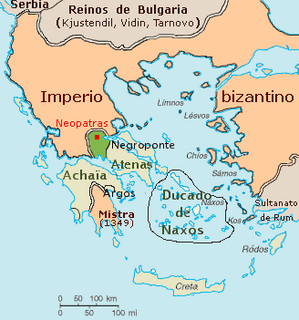 W
WThe Duchy of Neopatras was a Catalan-dominated principality in southern Thessaly, established in 1319. Officially part of the Crown of Aragon, the duchy was governed in conjunction with the neighbouring Duchy of Athens by the local Catalan aristocracy, who enjoyed a large degree of self-government. From the mid-14th century, the duchies entered a period of decline: most of the Thessalian possessions were lost to the Serbian Empire, internal dissensions arose, along with the menace of Turkish piracy in the Aegean and the onset of Ottoman expansion in the Balkans. Enfeebled, the Catalan possessions were taken over by the Florentine adventurer Nerio I Acciaioli in 1385–1390.
 W
WPeter I was the second son of King Sancho I of Portugal and his wife Dulce, infanta of Aragon, and would eventually become Count of Urgell and Lord of the Balearic Islands.
 W
WThe Prince or Princess of Girona is a title that was historically the title accorded to the heir apparent or heir presumptive to the Crown of Aragon. Current legislation mandates the title of Prince of Asturias to the heir of the Spanish throne but allows for the use of other traditional titles; The current title-holder therefore, is Leonor, Princess of Asturias.
 W
WThe Principality of Catalonia was a medieval and early modern state in the northeastern Iberian Peninsula. During most of its history it was in dynastic union with the Kingdom of Aragon, constituting together the Crown of Aragon. Between the 13th and the 18th centuries, it was bordered by the Kingdom of Aragon to the west, the Kingdom of Valencia to the south, the Kingdom of France and the feudal lordship of Andorra to the north and by the Mediterranean sea to the east. The term Principality of Catalonia remained in use until the Second Spanish Republic, when its use declined because of its historical relation to the monarchy. Today, the term Principat (Principality) is used primarily to refer to the autonomous community of Catalonia in Spain, as distinct from the other Catalan Countries, and usually including the historical region of Roussillon in southern France.
 W
WThe Reconquista was a period in the history of the Iberian Peninsula of about 780 years between the Umayyad conquest of Hispania in 711, the expansion of the Christian kingdoms throughout Hispania, and the fall of the Nasrid kingdom of Granada in 1492.
 W
WRemensa was a Catalan mode of serfdom. Those who were serfs under this mode are properly pagesos de remença ; they are often referred to simply as remences.
 W
WRoger of Lauria was an Italian admiral in Aragonese service, who was the commander of the fleet of the Crown of Aragon during the War of the Sicilian Vespers. He was probably the most successful and talented naval tactician of the medieval period. He is known as Ruggero or Ruggiero di Lauria in Italian and Roger de Llúria in Catalan.
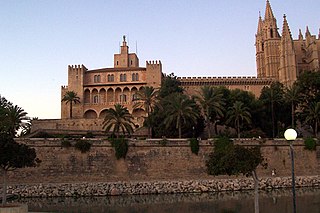 W
WThe Royal Palace of La Almudaina is the Alcázar of Palma, the capital city of the Island of Majorca, Spain.
 W
WThe Sentencia Arbitral de Guadalupe was a legal decree delivered by King Ferdinand II of Aragon at the Monastery of Santa María de Guadalupe in Extremadura, Spain on 21 April 1486 to free the Catalan remensa peasants who were subjects of the lord of the manor and tied to his lands and subject to numerous onerous fees and maltreatment under the so-called evil customs.
 W
WThe Senyera is a vexillological symbol based on the coat of arms of the Crown of Aragon, which consists of four red stripes on a yellow field. This coat of arms, often called bars of Aragon, or simply "the four bars", historically represented the King of the Crown of Aragon.
 W
WThe Kingdom of Sicily was a state that existed in the south of the Italian peninsula and for a time the region of Ifriqiya from its founding by Roger II of Sicily in 1130 until 1816. It was a successor state of the County of Sicily, which had been founded in 1071 during the Norman conquest of the southern peninsula. The island was divided into three regions: Val di Mazara, Val Demone and Val di Noto; val being the apocopic form of the word vallo, derived from the Arabic word wilāya.
 W
WThe Lordship of Albarracín was an independent Christian lordship in the Kingdom of Aragón located in and around the city of Albarracín. Its location was a buffer wedged between the Kingdom of Aragón and the Kingdom of Castile. The Señorío was created after the partition of the Taifa of Albarracín belonging to the Berber line of Banu Razín.
 W
WThe Lordship of Villena was a feudal state located in southern Spain, in the kingdom of Castile. It bordered to the north with Cuenca and to south with the city of Murcia. The territory was structured in two political centers: the Land of Alarcón, to the north, and the Land of Chinchilla to the south. Less central were the towns of Iniesta, the Land of Jorquera, Hellín, Tobarra, Almansa, Yecla, Sax and Villena, which, despite giving the name to the lordship, was territorially peripheral, although it previously included the cities along Vinalopó river. The borders changed with the time, provided the temporary addition of some towns and the loss of some other towns.